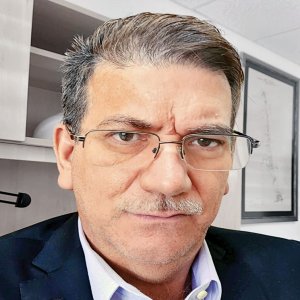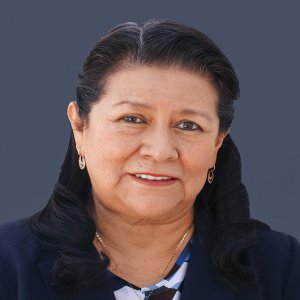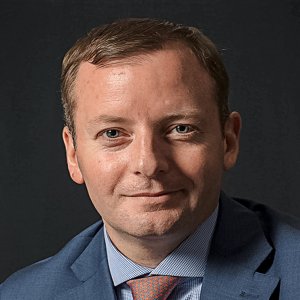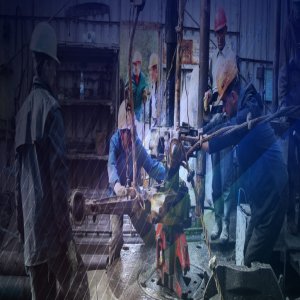Drilling Service Providers Close Waste Management Loops

STORY INLINE POST
Q: How would you describe the way in which the offshore services landscape has adapted to the crises of 2020?
A: We have noticed a change in that clients have new demands and standards. To cater to those, we have had to implement improvements throughout the year. For example, we have begun establishing a system of QR codes to identify each container. That is a very important tool because personnel on platforms can now download the unit’s certification documentation and other important materials to their phones while using the standard satellite internet connection available on offshore facilities. These materials can include the inspection and test results for each unit through methods such as penetrating liquids, magnetic particle inspection, leak tests and quality inspections. Onsite operational personnel and administrative support crews can gain easier access to this information through this system.
The amount of work increased throughout the first half of 2020, despite conditions that affected the industry. It was not until the second half of the year that we began to see a slowdown. This was due to administrative changes and a halt in work activities at a number of prominent platforms. We expect to close the year strongly despite the slowdown. We have had a great deal of luck in terms of surviving the difficult economic conditions created by the COVID-19 pandemic, thanks to the oil and gas industry’s essential nature and the fact that our containers play an irreplaceable role in the logistics of offshore oil and gas operations. Through our connections with PEMEX and its main offshore drilling partners, such as Constructora y Perforadora Latina, we have noticed an effort in getting payments delivered to finish the year on a positive note. At the same time, lowering our costs and making our operations as efficient as possible in response to this year’s oil price crisis did prove difficult. This is because such conditions were imposed on service providers like us as early as 2015, so we were already operating with thin margins.
Q: What changes have you seen in platforms’ waste management logistics during the pandemic?
A: This year represented a test for us as managers of environmental compliance. Recently, we began overseeing all aspects of the containers’ logistical cycle, from their use on platforms to their transportation to onshore waste treatment facilities, where their contents are dumped and processed safely. 2020 was an interesting year to test out these capabilities and we certainly witnessed an increase in demand from clients and regulators that waste and residue management be equipped to handle the conditions imposed by the COVID-19 pandemic.
In addition, we are also building our own barite processing plant, through an association with another company, inside our own plots of land. We expect the plant will be online by January 2021 and we will open a business focused on commercializing the barite that we processed and extracted from the waste of drilling fluids. We are also building a partnership this year with Canadian company Command Tubular to represent them in Mexico. They are focused on the fabrication of drilling tubing and casing, along with other similar drilling components. We expect to begin representing them by November 2020.
Although our fabrication of new units has been slowing down, we have manufactured and placed over 700 new units in circulation this year compared to last year. We now have a total of 2,000 containers in circulation. We were lucky in this regard, since all the material we needed to build these containers was purchased and transported to our manufacturing facilities before the shutdowns began in April. We also implemented insights into best practices in terms of waste management and environmental policy. We did this by building and fitting our plants to obtain and purify as much water as possible from drilling waste, which we can later be reused to clean our units. I do not believe anybody else in Tabasco works in this environmentally friendly way. We also have had no leaks or spills.
Q: What is the difference between DNV GL container certifications and NOM?
A: The price difference between units certified by DNV GL and units certified by NOM is quite high, to an almost three to one ratio, despite providing exactly the same service. This issue continues to be quite relevant. Companies such as CNOOC entered Mexico hoping to use units certified by DNV GL. Soon after finishing an independent analysis, which included a detailed inspection of our units after we began working with them through the ESEASA port facilities in Tampico, it was concluded that nothing was lost when using units certified by NOM. They could tell that DNV GL requirements called for the use of types of steel built to withstand North Sea water temperatures, which do not exist in Mexican waters.
Consorcio EMCRO is a Mexico City-based manufacturer and leaser of certified steel containers for the oil and gas industry. It also builds plants and provides related services for waste processing.








 By Pedro Alcalá | Senior Journalist & Industry Analyst -
Fri, 12/18/2020 - 16:22
By Pedro Alcalá | Senior Journalist & Industry Analyst -
Fri, 12/18/2020 - 16:22








